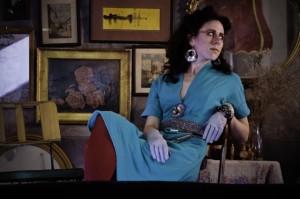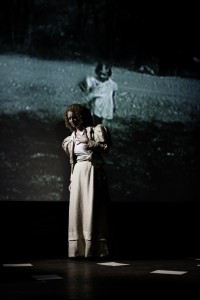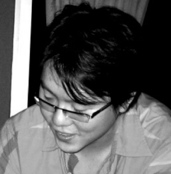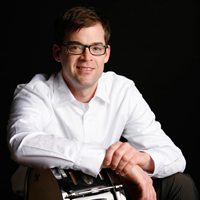
Last week the Composition Department at the University of Michigan hosted two distinguished guest composers: Susan Botti and Marilyn Shrude. Their visit was marked both by an appearance at our weekly Composition Seminar class and, most importantly, performances of their work with Marilyn Shrude leading off a recital by her husband – renowned Saxophonist John Sampen – and Susan Botti featured as a composer and vocalist in the heart of University of Michigan Symphony Band’s inaugural performance of the year.
Mr. Sampen’s recital last Thursday was one of the more unique performances I’ve attended, continuously presenting a handful of works for saxophone without any pauses thanks to pre-recorded comments from each composer played in between the pieces. Some of these were straight-up verbal program notes, while others – like Ms. Shrude’s – set a backdrop for the forthcoming music. These oral preambles were not the only special aspect of the recital’s production: each work was paired with a visual accompaniment. Supplementary images we projected on a screen in conjunction with each piece, the most compelling and significant of which was the animation paired with Ms. Shrude’s composition, Trope (2007), written for alto saxophone and a pre-recorded tape of other saxophones.
Trope’s performance – the evening’s first – was set in darkness broken only by the auditorium’s projector, which displayed the beautiful animation I just mentioned. Given the darkness and the un-processed qualities of the tape, I found myself drawn into the sound as I attempted to locate where the saxophones I heard were coming from. The music itself is very closely written – neither the live nor taped parts leave the instrument’s middle register – and serene, at times using the multiple saxophone parts to create harmonies and, at others, playing timbral tricks with the instruments’ homogenous sound. The animation reflects the musical texture, and when the saxophones are united, only one line moves across the screen, while it splits into other, fainter lines when the sonic texture becomes more variegated. I was deeply engaged with the work’s visual element and felt it perfectly complemented Ms. Shrude’s gentle and tender music.
Despite the presence of multimedia throughout the evening, technology was not a prominent a feature of every work on the program. Japanese composer Fuminori Tanada’s Mysterious Morning III (1996) and William Bolcom’s A Short Lecture on the Saxophone (1979) solely featured Mr. Sampen’s talents, while the remaining three works all paired the saxophone with electronics – both interactive and pre-recorded. I mention Mr. Sampen’s “talents” and not simply his “playing” because A Short Lecture on the Saxophone is more of a dramatic work than a musical one. Essentially, the piece calls for Mr. Sampen to (seemingly) tell the story of his life as a saxophonist, coloring the spoken text with instrumental squeaks, over-played etudes and other demonstrative musical tidbits. The piece overflows with charm and humor, which more than compensated for the general absence of much musical substance. Of course, the point of the piece (if the title doesn’t make this clear enough) isn’t purely musical, and I was happy to see Mr. Sampen delightfully put his personality on display alongside his virtuosic ability on the saxophone.








